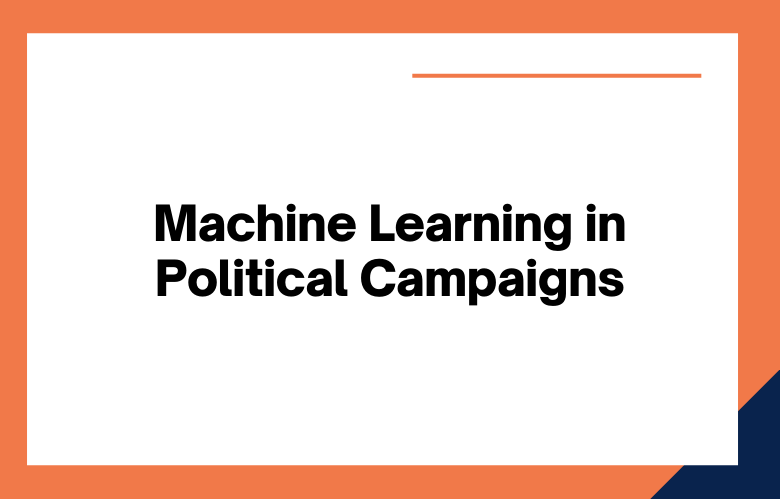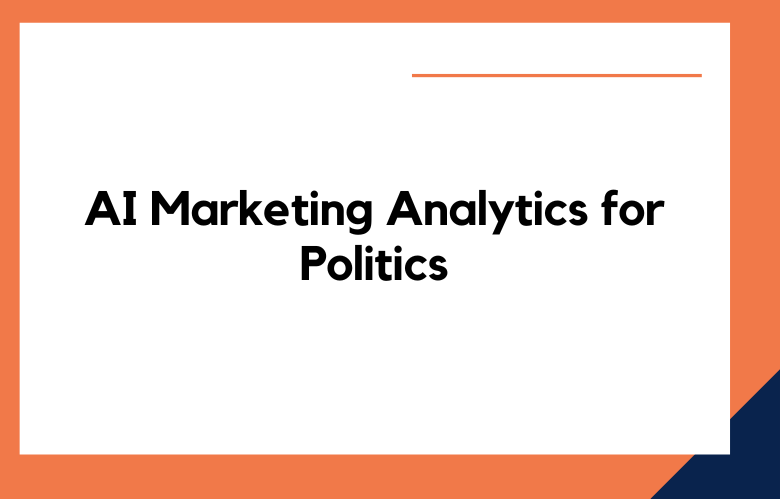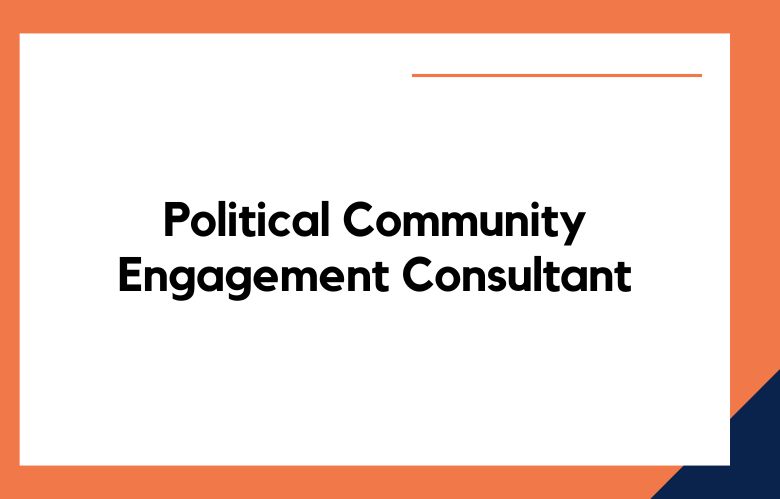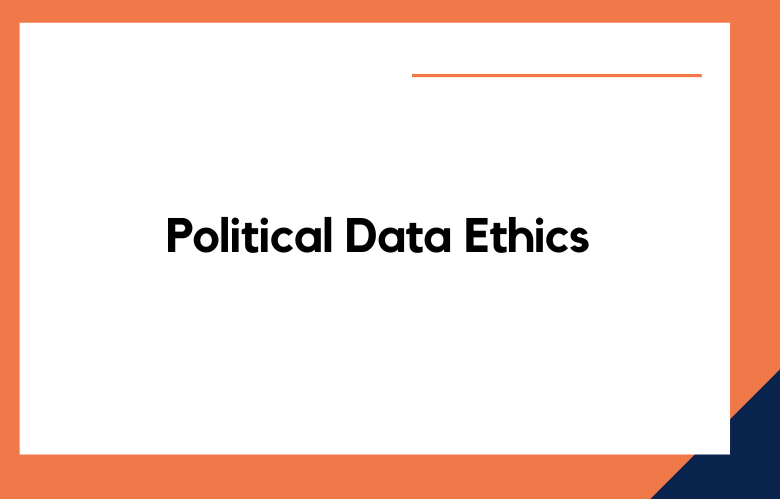As technology advances, so does the way we can use it in our political campaigns.
Machine learning is more popular in making data-driven decisions. We’ll explore how machine learning can be used in political campaigns. We’ll look at how machine learning can target voters, predict election outcomes, and improve campaign effectiveness.
Here are four ways machine learning can be used in political campaigns
Automated phone calling:
Machine learning can make automated phone calls that are more effective at getting out the vote. By analyzing data about who has voted in past elections, campaigns can target specific voters with automated phone calls that remind them to vote and provide information about polling locations and hours.
Predictive modeling:
In predictive modeling, analysts create models that aim to explain relationships between certain factors and an outcome of interest. Political campaigns can use this technique to try and predict election outcomes.
Predictive modeling is a powerful tool that can be used to significant effect in political campaigns. By analyzing data sets, campaigners can develop models that predict voters’ behavior.
This information can target swing voters and persuade them to support a particular candidate. Predictive modeling can thus give campaigns a significant advantage in voter turnout and election results.
Predictive modeling can be a powerful tool for political campaigns, helping them make better decisions about where to focus their resources and efforts. However, predictive modeling is not perfect, and there is always a degree of uncertainty involved in any forecasting exercise.
Despite its imperfections, predictive modeling can be a valuable tool for political campaigns, providing them with insights that they would otherwise be unable to obtain.
Predicting voter turnout:
Are you interested in finding out how many people will vote for your candidate? Do you want to know the chances of your party winning the election? We can assist you with that! We specialize in predicting voter turnout for political campaigns.
Predicting voter turnout is critical for political campaigns. If a campaign can accurately predict which voters are most likely to turn out, it can target its resources more efficiently and improve its chances of winning.
Accurately predicting voter turnout is critical for Political Campaigns. Getting even a slight edge can mean winning and losing an election. For this reason, many campaigns pour millions of dollars into polling and data analysis.
Voter turnout is a critical factor in predicting the outcome of political campaigns. Turnout rates can vary widely from one election to the next and even within the same election. Weather, campaign spending, and media coverage can all affect voter turnout.
Identifying potential supporters:
One of the most significant factors of a successful political campaign is identifying potential supporters. This can be done by gathering data and conducting research. That’s why it’s essential to have a good team that can help you identify potential supporters and build relationships with them.
Campaigns rely on supporters to be successful. Potential supporters can be identified in several ways.
For example, people who have donated to similar campaigns in the past are likely to support a new campaign. Additionally, people who have voiced support for similar causes are potential supporters.
Campaigns reach out to potential supporters through various channels, including social media, rallies, and events. Campaigns need to identify their potential supporters and tailor their messaging accordingly.
Targeting voters with relevant information:
One of the important factors of a successful political campaign is identifying potential supporters. This can be done by gathering data and conducting research.
However, it’s not always simple to tell who will be supportive of your campaign. That’s why it’s essential to have a good team that can help you identify potential supporters and build relationships with them.
Campaigns rely on supporters to be successful. Potential supporters can be identified in several ways.
For example, people who have donated to similar campaigns in the past are likely to support a new campaign. Additionally, people who have voiced support for similar causes are potential supporters.
Campaigns reach out to potential supporters through various channels, including social media, rallies, and events. Campaigns need to identify their potential supporters and tailor their messaging accordingly.
Potential supporters for political campaigns can be identified by studying voting patterns.
For example, potential supporters may live in areas that have voted for similar candidates. By understanding voting patterns, campaigns can more effectively target potential supporters.
When it comes to political campaigns, identifying potential supporters is crucial. Without the support of people who believe in your message, it’s impossible to win an election.
Most campaign teams dedicate significant resources to identifying and targeting potential supporters. By doing this, they can make sure that they’re reaching the right people with their message.
It’s not easy to identify potential supporters for a political campaign.
Analyzing campaign performance:
Analyzing campaign performance is critical for political campaigns.
By understanding what works and what doesn’t, campaigns can improve their chances of success.
Analyzing campaign performance can help campaigns fine-tune their strategies and better target their audiences.
In other words, studying campaign performance is essential for any political campaign that wants to win.
Analyzing campaign performance is essential for political campaigns to determine what is working and what isn’t. This allows campaigns to fine-tune their strategies and increase their chances of success.
Without analyzing campaign performance, campaigns would be flying blind, and their chances of winning would be significantly reduced. So if you’re running a political campaign, be sure to track your progress and analyze your results along the way.
- Performance analysis is key for any political campaign.
- Understanding what voters respond to and what doesn’t work is crucial for success.
- Data can be analyzed in many ways to give insight into a campaign’s strengths and weaknesses.
- By looking at past performance, campaigns can learn from their mistakes and adjust their strategy.
Analyzing campaign performance is more important than ever in today’s political climate. By understanding the data behind a campaign, strategists can make informed decisions that could mean the difference between winning and losing.
For political campaigns, analyzing performance data is essential to making informed decisions about strategy. This analysis can be the difference between a successful campaign and an unsuccessful one.
Working on political campaigns is always exciting. There’s never a dull moment. You’re constantly learning and trying new things. And, of course, monitoring and analyzing campaign performance is a massive part of the job.
You have to be constantly on your toes, monitoring every little detail of the campaign. Every decision made could be make-or-break. It’s exhilarating and a lot of pressure, but it’s also incredibly rewarding to see a successful campaign come to fruition.
Ways to Use Machine Learning in Political Campaigns
- Predict voter turnout
- Analyze social media data to identify influential supporters
- Create targeted ads based on individual voters’ interests
- Track spending and donations
- Automate phone banking and canvassing
- Analyze public opinion on specific issues
- Identify key demographics for a campaign
- Track the success (or failure) of a campaign
- Monitor social media for sentiment around a candidate or issue
- Automate tasks such as data entry and analysis
- Use machine learning algorithms to analyze voter data and target them with specific campaign messages
- Use machine learning to monitor social media for positive or negative sentiments about the candidate.
- Automate the process of sending emails to supporters, thanking them for their help and asking for more support
- Use machine learning algorithms to create predictive models to identify which voters are likely to switch sides before the election.
- Analyze data from past elections to better understand how different demographics voted and what strategies were most successful
- Use machine learning algorithms to generate reports on how well the campaign is doing automatically.
- Use machine learning algorithms to analyze better voter data to target them with campaign ads.
- Use machine learning to monitor social media for sentiment analysis on political topics.
- Use machine learning algorithms to predict voting patterns from past election data.
- Train artificial intelligence models to read and interpret news articles about politics
- Automate the process of scheduling campaign events and rallies
- Create a chatbot that can answer common questions about the campaign.
- Use machine learning algorithms to analyze voter data to target campaign messages better.
- Use machine learning to monitor social media for sentiment about the candidate or campaign.
- Use machine learning models to predict which voters are likely to support the candidate.
- Use machine learning algorithms to identify areas where the campaign needs more support.
- Analyze poll results using machine learning to improve messaging and strategy.
- Use machine learning to analyze voter data and target them with specific messages that appeal to their interests.
- Use machine learning algorithms to identify potential donors and target them with fundraising requests.
- Use machine learning to monitor social media for sentiment about the candidate or campaign and adjust strategy accordingly.
- Automate tasks such as phone banking and door-to-door canvassing using machine learning algorithms
- Analyze poll results in real-time to make decisions about where to allocate resources
- Generate reports on how well the campaign is doing.
- Use machine learning algorithms to analyze voter data and target them with specific campaign messages.
- Use machine learning to monitor social media for positive or negative sentiments about your candidate or opponent.
- Automate the process of sending fundraising emails or text messages to supporters.
- Create a chatbot to answer common questions from voters or campaign volunteers.
- Analyze video footage of speeches and debates to improve future speeches and debate performances.
- Use machine learning algorithms to analyze voter data to target campaign messages better.
- Develop predictive models to identify which voters are most likely to support your candidate
- Use machine learning techniques to automatically filter through social media posts to identify fake news and propaganda.
- Create chatbots that can answer common questions from voters
- Train a computer vision model to detect and track campaign events in real-time automatically
- Analyze survey data to understand public opinion on key issues
- Automatically generate reports on how well the campaign is performing.
- Use machine learning algorithms to analyze voter data and target them with specific campaign messages
- Use machine learning to identify influential people on social media and target them with campaign ads.
- Use machine learning to monitor public sentiment about the candidate and adjust campaign strategy accordingly.
- Use machine learning to prevent election fraud by tracking irregularities in voting data.
- Analyze poll results using machine learning to understand voter sentiment better
- Automate speech recognition software for transcribing speeches and debates.
- Use machine learning algorithms to analyze voter data and target specific demographics with tailored messages.
- Use machine learning to predict which issues will be most important to voters in upcoming elections.
- Use machine learning algorithms to identify fake news stories and prevent them from spreading on social media platforms.
- Use machine learning models to analyze speeches and debate performances to improve future speeches and debates.
Conclusion
As we’ve seen, machine learning can be used in several ways to help political campaigns.
It can improve voter targeting, increase fundraising efficiency, and even help with the campaign’s overall strategy.
Contact us today if you’re interested in using machine learning for your next political campaign.
We’d be happy to share more about how this technology can help you win on election day.
One way to get in touch is by filling out our online form on this site or give us a call at
+91 9848321284. Let’s work together today!











